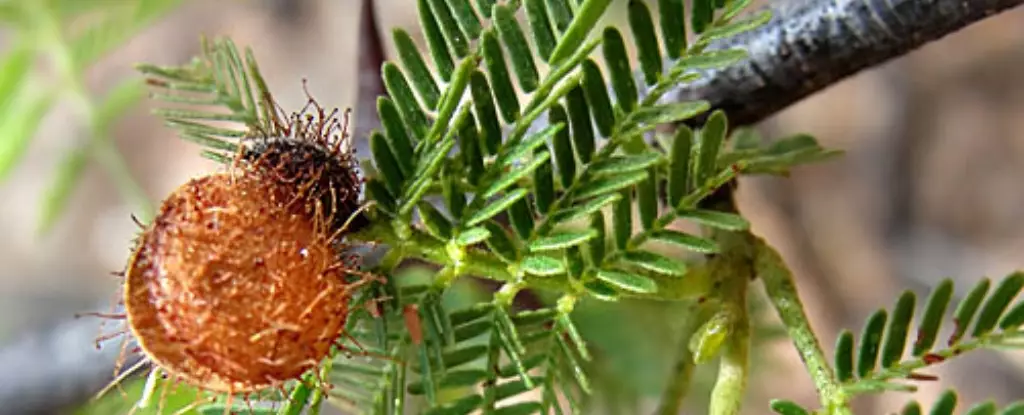In recent years, the jurema preta plant has begun to capture the attention of both researchers and those seeking alternative treatments for mental health issues, specifically depression. Long revered by Indigenous tribes in Brazil, this plant serves as a conduit to altering consciousness through its primary psychoactive component, dimethyltryptamine (DMT). As we stand on the precipice of a potential revolution in mental health treatment, it becomes essential to delve into what makes jurema preta a beacon of hope for many, while assessing the implications of using such a powerful tool in a contemporary therapeutic context.
DMT has gained notoriety for its transformative effects, transporting users into altered states of consciousness. Individuals like Guaracy Carvajal have shared testimonials of introspective journeys, claiming insights that “solve” complex life dilemmas during brief but intense experiences after inhaling vaporized DMT. His pursuit to alleviate the debilitating weight of chronic depression led him to extract DMT from jurema roots through online guides—a symbol of the merging of ancient practices and modern technology that is currently reshaping our understanding of mental health treatment.
Breaking Down Barriers: The Rise of Psychedelic Research
The psychological landscape is evolving, as experts like physicist Draulio Araujo at the Brain Institute of the Federal University of Rio Grande do Norte push boundaries to understand how psychedelics can affect illnesses such as depression. His research has revealed rapid and significant improvements in patients’ well-being within just a day of using DMT. However, he cautions that the psychedelic experience is not a universal remedy and emphasizes the tested combination of therapy and psychedelia as the true healing mechanism.
Indeed, Araujo’s work prioritizes safety and comprehensive care. Employing medical supervision during treatments involving DMT, the research team also incorporates psychological therapy alongside traditional pharmaceutical options—a holistic approach often overlooked in our rush to find “quick fixes” for mental health challenges. This collaborative treatment method sheds light on the complex nature of depression, which cannot be addressed effectively with a one-size-fits-all mentality.
Individual Experiences: A Long Road to Healing
The effectiveness of jurema preta in treating depression isn’t uniform; while some individuals rave about newfound clarity and emotional relief, others might find little to no benefit. Neuroscientist Fernanda Palhano-Fontes articulates this discrepancy with important gravitas: “We have patients who improve significantly, others who don’t improve at all.” This spectrum of experiences invites crucial conversations about mental health treatment’s nuances, underscoring the need for personalized approaches tailored to individual needs and histories.
Carvajal’s own journey serves as both a hopeful narrative and a cautionary tale. After benefiting from jurema preta, he ultimately distanced himself from the substance. This personal revelation speaks volumes about the ephemeral nature of psychedelic experiences; what may catalyze one person’s transformation could be an unnecessary distraction or even a hindrance to another’s growth. His story encapsulates an essential truth about mental health: healing is highly individual and often requires continual exploration.
Cultural Legacy Meets Scientific Inquiry
Interestingly, Brazil finds itself at a unique crossroads—the intersection of cultural heritage and modern scientific inquiry into DMT. While the plant’s use for non-religious purposes is scrutinized under legal frameworks, its historical significance within Indigenous practices underscores a deep-rooted understanding of altered states. Ceremonies that involve jurema, often marked by group gatherings and shared experiences, propose that healing may also take place within social contexts.
Joyce Souza, an attendee of a jurema ceremony, highlights this element: “It’s not hallucination… My spiritual channels become more accessible.” The collective nature of such events suggests that healing doesn’t occur in isolation. Instead, communal experiences may amplify the psychoactive effects of jurema by fostering connections and shared understanding.
Although there are mindful concerns about the sensationalization of substances like DMT, Brazil’s regulatory landscape allows for a nuanced exploration of these complex interactions. As Araujo envisions expanding studies to encompass more participants, the expectation is not only to validate the drug’s efficacy but to build a stronger framework around its clinical applications in mental health.
Ultimately, as we forge ahead in this burgeoning field, the dialogue surrounding the use of jurema preta and similar psychedelics will likely play a pivotal role in redefining how societies understand, approach, and treat mental health challenges. The power of natural substances combined with comprehensive therapy offers tantalizing possibilities, urging us to reconstruct the narrative around healing and recovery in profound new ways.


Leave a Reply